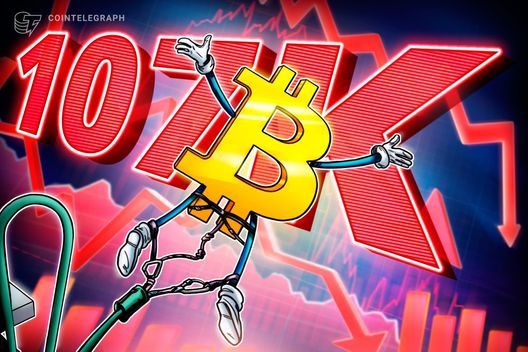

Bitcoin's price experienced a notable pullback, falling to $107,000, despite a substantial $1 billion inflow into spot Bitcoin ETFs. This seemingly paradoxical situation has spurred a flurry of analysis to determine the underlying factors driving this market behavior.
One primary factor is the market's digestion of a multibillion-dollar transfer from a long-dormant Bitcoin wallet. On-chain analysts have speculated that a miner from 2011 was behind the movement of 80,009 BTC. This entity reportedly once held over 200,000 BTC. While concerns over a potential sale are valid, large holders moving dormant coins isn't unusual. If the entity intended to sell, it would be counterproductive to move so many addresses at once, as that could draw attention and impact pricing.
Profit-taking ahead of the weekend could also be contributing to the price dip, especially considering Bitcoin was recently just 1.5% below its all-time high. Investors may be choosing to secure profits, leading to increased selling pressure.
Concerns regarding the U.S. economy and potential global trade wars are also weighing on investor sentiment. United States President Donald Trump reaffirmed the July 9 deadline for increasing import tariffs, adding to market anxieties.
Despite the price drop, Bitcoin ETFs have shown strong performance, with the U.S. spot Bitcoin ETFs approaching $50 billion in total net inflows since their debut in January 2024. BlackRock's iShares Bitcoin ETF (IBIT) has been particularly successful, generating significant fee revenue for BlackRock. Fidelity's FBTC and BlackRock's IBIT have been major contributors to these inflows, attracting substantial investments.
The dynamics of supply and demand fundamentally drive Bitcoin price movements. Bitcoin's supply is capped at 21 million coins, making it a scarce resource. As more people adopt Bitcoin and demand increases, the limited supply can drive the price. Conversely, when demand drops, the price can decline. Investor sentiment, influenced by news, regulatory developments, and technological advancements, also plays a vital role.
Positive news, such as regulatory acceptance or technological upgrades, can boost investor confidence and drive up Bitcoin prices. Conversely, negative news, such as security breaches or regulatory crackdowns, can lead to panic selling and a subsequent price drop. Macroeconomic factors, including economic uncertainty, inflation, interest rates, and currency exchange rates, can also influence Bitcoin's price.
In summary, the recent Bitcoin price dip to $107,000, despite significant ETF inflows, can be attributed to a combination of factors. These include market digestion of large wallet transfers, profit-taking, macroeconomic anxieties, and the inherent volatility of the cryptocurrency market. While short-term price fluctuations are common, the continued strong inflows into Bitcoin ETFs suggest sustained institutional interest and a potentially positive long-term outlook.